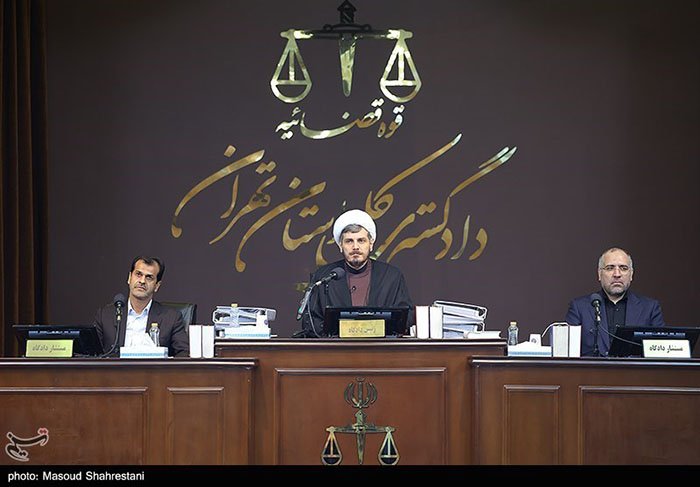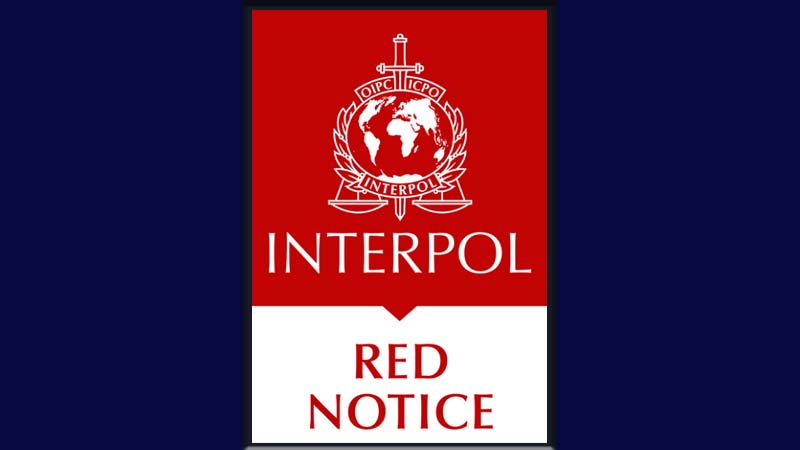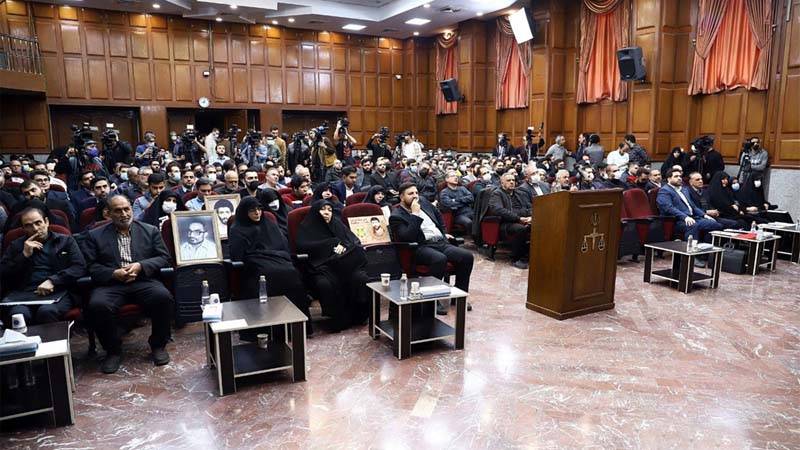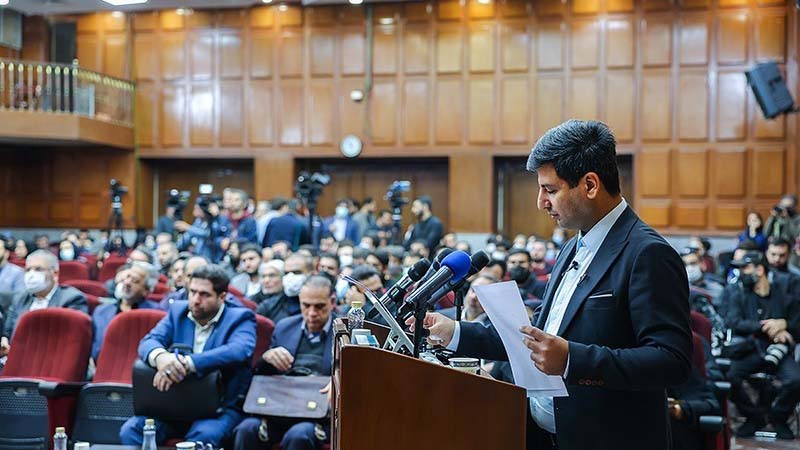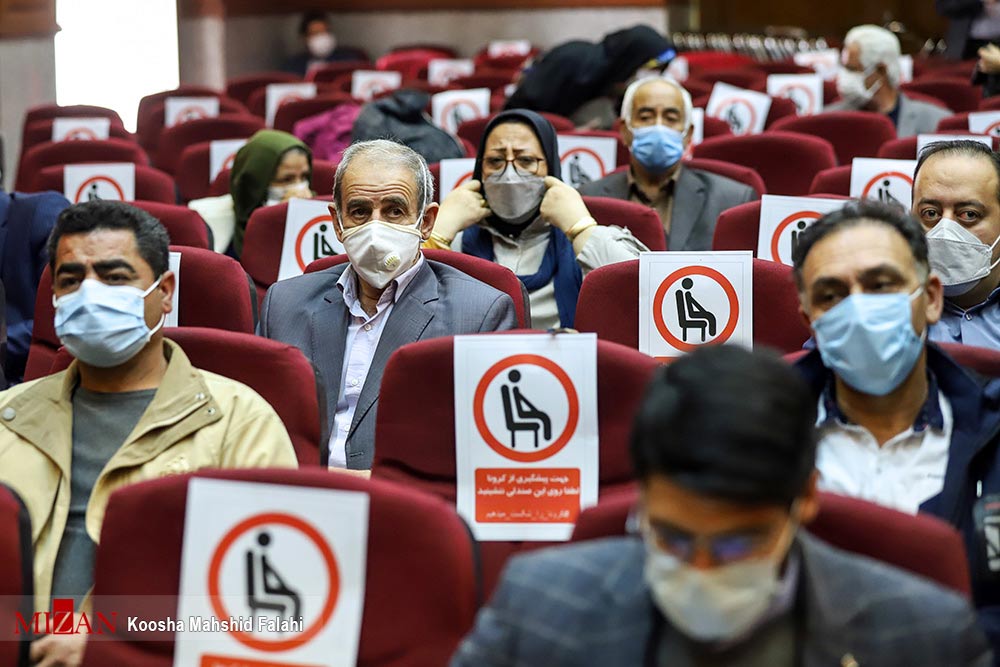The fourth session of the court hearing the accusations of 104 members of the Mujahedin-e Khalq organization (MKO/ MEK) and the group as a legal entity, was held on Tuesday, December 26, at the eleventh branch of the Criminal Court of Tehran. The court was presided by Judge Dehghani.
In the past sessions, the indictment of 33 defendants in the case has been read.
MEK terrorists started soon after the revolution
Before reading of the indictment of the accused ones, the prosecutor’s representative stated: “The MEK terrorist group has been collecting weapons for 28 months after the victory of the Islamic Revolution. This group claimed that the fight against imperialism required weapons and military branch. But at the beginning of the 60s, this group used to parade in the street and fight with people in the street.”
According to the prosecutor’s representative, Massoud Rajavi, the leader of the group had a trip to Paris before June 20, 1981 (the start of the MEK’s armed struggle against Iran) and entering the military phase and had a meeting with the officials of the French Intelligence Service in Paris; After the meeting, they blew up the office of the Islamic Republic Party in Tehran.
“In a meeting with General Habbush, the head of the Iraqi Intelligence Service, Rajavi revealed that the MEK not only blew up the building of the Islamic Republic Party, but he was also responsible for blowing up the prime minister’s office,” he addressed the court.
He added, “On the September 27th, 1981, the MEK once again brought their para military forces to the streets who openly brought weapons to the streets and killed anyone who stood in their way. On this sad day, from a 3-year-old child to a 90-year-old man, were killed by the MEK forces.”
Massoud Rajavi confessed his terror acts
Based on the documents presented by the prosecutor’s representative, the documents and images of the MEK’s violent act were distributed by the group’s network. “Massoud Rajavi, the leader of the MEK, said about this crime that first we encouraged the people to join us in Shohada Square. But we observed that the balance was messed up and people refused to cooperate.” Rajavi has admitted that because the people ignored the MEK militia, the group opened fire on civilians.
The MEK’s cross border operations against Iran for oil money
According to the prosecutor’s representative, after Rajavi took his terrorist organization to Iraq, the group crossed the border with the cooperation of the Iraqi Intelligence service and entered Iran to launch terrorist operations in urban areas.
He added, “At that time, Rajavi believed that cross border operations had no added value for the group and that large-scale assassinations were necessary to bold the name of the People’s Mojahedin-e-Khalq organization. The MEK had asked its internal headquarters to assassinate people in the cities with groundbreaking operations. The MEK carried out these operations on behalf of the Iraqi regime, and instead, they got a guarantee of staying in Iraq and getting five million barrels of oil! The MEK exchanged the blood of Iranian nation the oil of Iraq.”
Who runs the MEK’s so-called rebel centers?
The prosecutor’s representative stated that in the 1980s, in order not to claim responsibility for the terror acts against civilians, the MEK claimed that its internal headquarters was carrying out the assassinations. He said, the rebel centers that have been active in the recent riots (2008 and fall of 2022) are new version of the internal headquarters of the MEK, which is run by the terrorist group from Albania.”
Eavesdropping of the MEK by the CIA
“Based on an American intelligence document about the eavesdropping of the MEK headquarters, the group confessed to terrorist acts,” prosecutor’s representative told the court. “The CIA in Los Angeles has intercepted several phone calls in which the leaders of the MEK terrorist group in France and Germany admitted that terrorist acts and bombings were their work.”
Sister of a 14-year-old victim of the MEK in the court
Then, the sister of one of the victims of the MEK terror acts, took the stand with the permission of the head of the court and explained how her sister was killed: “Zainab was a 14-year-old student who went to congregational prayers with the permission of her mother. He left the house and was suffocated by members of the MEK group with her chador.
The sister of Zeinab Kamai 15333 addressed the court, “For what sin did they martyr my sister?”

